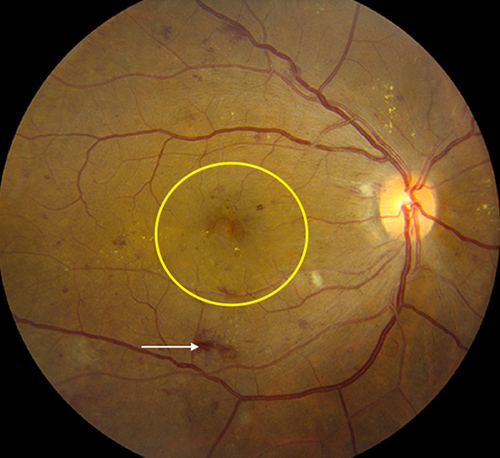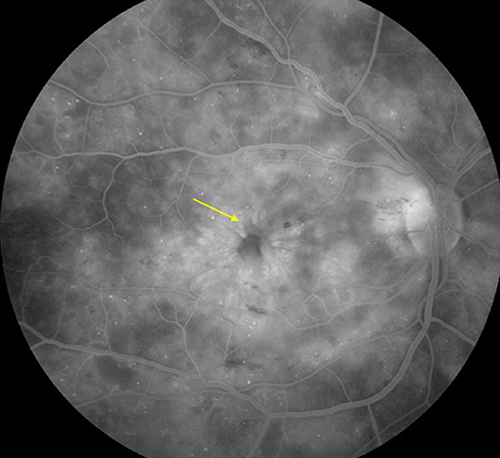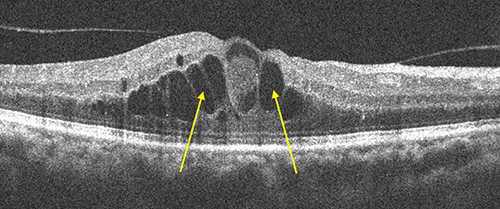Diabetic Macular Edema

Retinal Photograph of a patient with Diabetic Macular Edema. The yellow circle shows swelling in the center of the retina (the macula). The white arrow points to one of several spots of blood in the retina.

Fluorescein Angiogram: The yellow arrow points to one of many oval, and circular whitish areas. These are areas of swelling within the retina.
Please see How the Eye Works for an introduction. Within the retina is a system of blood vessels – arteries, veins, and capillaries. This system of blood vessels nourishes the retina with oxygen. One large artery, the central retinal artery, carries blood to the retina. As the artery enters the eye, many branches spread out throughout the retina. The blood then goes through a fine network of very small vessels called capillaries. After the blood moves through this network of capillaries, it enters branches of veins, called, branch retinal veins. These then join together to form the large vein called the central retinal vein that drains the blood from the eye. Diabetes causes damage to retinal vessels. This is called diabetic retinopathy. Diabetic macular edema occurs when the small capillaries in the retina have become leaky due to diabetic retinopathy. As serum (the clear sticky party of blood) leaks from these damaged capillaries, it collects in the retina and causes swelling. This blurs and distorts vision.

Optical Coherence Tomography Study: The yellow arrows point to two of several dark oval shaped areas. These are cysts within the retina due to fluid selling the retina
Treatment
Treatment for diabetic macular edema usually involves intravitreal injections of Lucentis, Eylea, or Avastin. These injections are given monthly for several months. Usually many injections are needed to control the leakage. Once the edema has resolved, usually the treatment interval is increased and as long as the edema remains resolved, the interval is increased further.
It is not possible at the beginning of treatment to know how many injections will be needed. Experience has shown that with treatment patients do much better than without. Therefore, starting treatment and continuing with treatment is very important to insure that your eyes and vision do as well as possible. Once the leakage is under control, continued monitoring is important. It is not uncommon to require injections in the future even if you have not needed an injection for several months. Laser treatment is sometimes done in addition to the injections.
Copyright 2020 West Coast Retina
